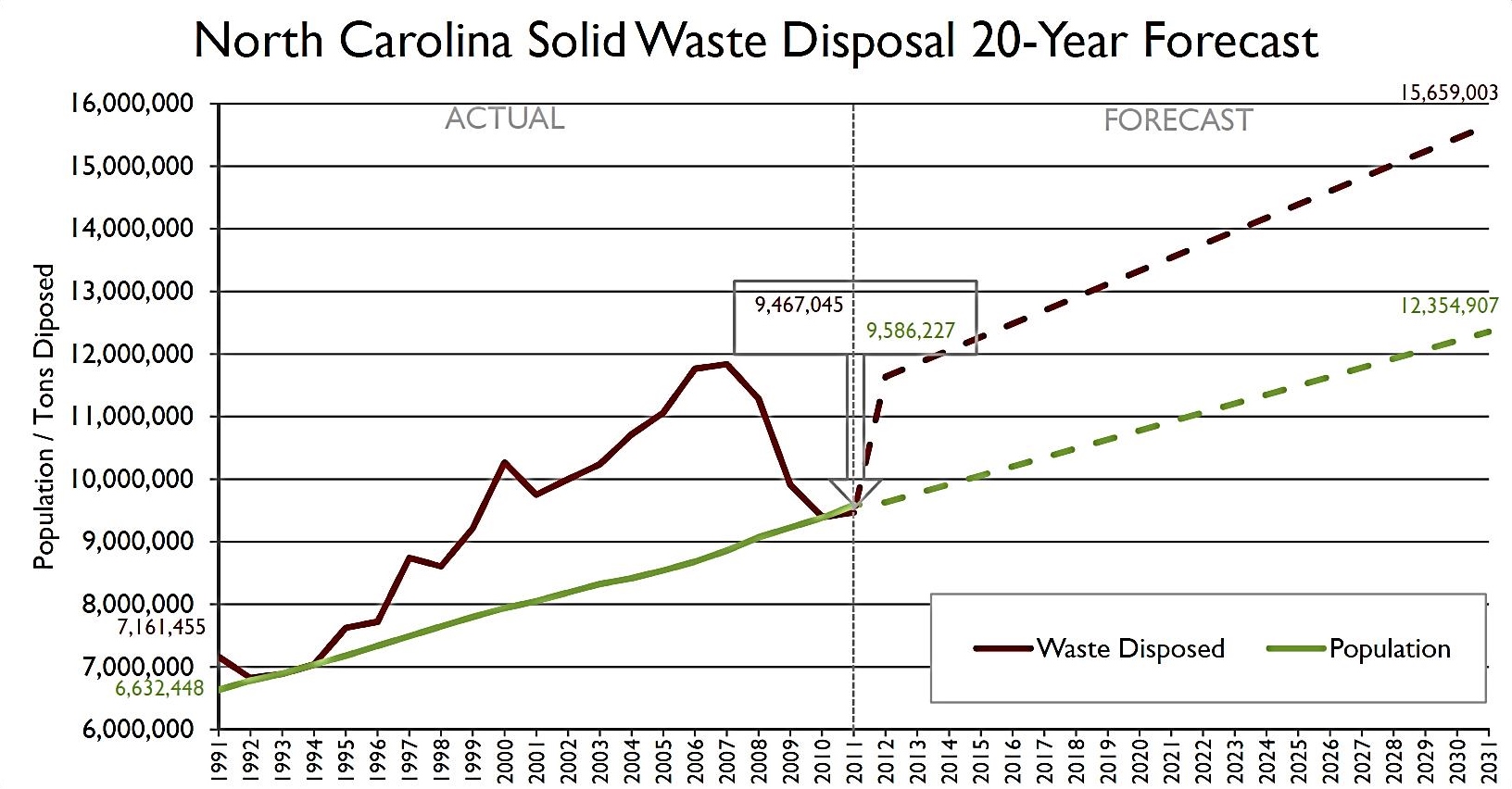Lexi Kay Herndon is the Marketing and Outreach Coordinator at the Environmental Finance Center at UNC Chapel Hill.
Trash. Most of us don’t really think about it – you throw it in the bin, a truck comes by to pick it up, and it’s gone. Though your garbage may not take up much of your brain space, it sure does take up a lot of physical space (and not surprisingly, it also happens to take a lot of money to manage).
Solid waste management is one of the biggest environmental concerns with which local governments have to contend – and the challenges are only growing. Local governments not only have to deal with a huge volume of trash, but they also have to balance management costs, efficiency, customer service, protection of public health, environmental regulations, politics, and growing pressure to reduce waste and increase recycling.
Further, solid waste management has been changing rapidly over the last few decades, placing more pressure on local governments to work towards better management, increased efficiency, and improved service. In its most recent Solid Waste Management Plan, the North Carolina Department of Environment and Natural Resources (NCDENR) cites major transformations in the solid waste sector, including increased disposal, exceptional growth in recycling, growing reliance on tipping fees, and rising public concern about landfills.
Let’s consider some of the major trends:
•Total amount of waste being taken to landfills: In North Carolina, between 1991 (when the state started tracking this data) and 2006, the total amount of solid waste increased year by year up to almost 12 million tons. But in more recent years, that trend has reversed, most likely because construction and demolition of homes fell with the bad economy (though increased recycling rates also play a role). The trend is expected to reverse again as the economy picks up and population continues to grow.
• Number, location, and ownership of landfills: To further complicate things, local governments are dealing with increased regionalization of landfills (the figure below shows a consistent decline in the number of landfills across the US), an increase in privately owned landfills and increased shipping distances to regional facilities.
Number of Landfills in the US 1988 – 2009
• Solid Waste management is becoming more expensive. A comparison of tipping fees at NC Municipal Solid Waste Landfills in 1991 to 2012 reveals that fees have risen 90%. The average tipping fee per ton of waste in 1993 was $22 (2013 equivalent) vs. $42 in 2013.
These trends leave many local governments struggling with how they can continue to provide services in effective, financially sound, and environmentally sustainable ways.
Having a strong solid waste management program is important because compared to other services, waste management is expensive. Solid waste and recycling systems have significantly high fixed costs, and in some cases solid waste management can account for up to 30-40% of spending. According to a recent report produced by the NC Benchmarking Project, in 2011-2012 most NC cities spent millions on residential waste collection (for example, Charlotte, the largest city in the state, spent close to $14 million).
In the face of these challenges, communities in North Carolina and around the country have adopted creative strategies for increasing the efficiency of their solid waste management programs while promoting overall waste reduction. NCDENR, Mecklenburg County, and the Triangle J Council of Governments all offer resources detailing best management practices and innovative programs for solid waste management. One approach that is rapidly growing in popularity is the concept of Pay as You Throw (PAYT) programs that aim to both reduce overall solid waste disposal volume and save local governments money. For example, the City of Gloucester, MA implemented a WasteZero PAYT program in 2009 that resulted in a first year 37% reduction in trash volume accompanied by a $140,000 savings for the City.
To help local governments contend with some of these issues and explore options for sound solid waste management, this October the Environmental Finance Center offered for the first time ever an in depth two day course on Solid Waste Finance. The course focused on best practices and techniques for managing costs and raising revenue, with a focus on waste reduction. The course included a summary of solid waste tax and fee options, updates and forecasts on solid waste and recycling cost drivers, and case studies of innovative waste and recycling practices. All of these course materials and more are available on the EFC website through the link below for practitioners to view, download, and share.
SOLID WASTE FINANCE: CONTROLLING COSTS THROUGH INNOVATIVE WASTE MANAGEMENT AND REDUCTION PROGRAMS
What do you think are the biggest challenges of solid waste management? What innovative projects or programs exist to help local governments deal with those challenges? Let us know in the comments section below!







0 Comments
1 Pingback